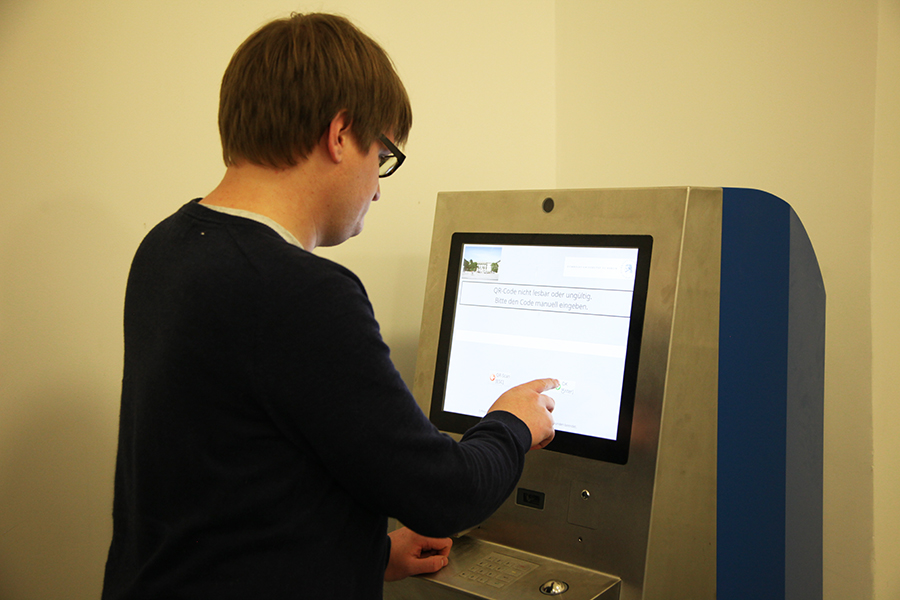The Campuscard to replace Student ID

Figure: Martin Ibold
The grey-blue card machines that have arrived in various places in the HU over recent months, such as in the west wing of the main building on the second floor, still appear to be rather new. Their screens display ‘Touch the screen to start the process.’ in red letters, and few students are using them. Indeed, this marks the start of the university’s new identification system which has been in its second test phase since December 2016. “During the first phase, we tested the Campuscard with around 200 volunteers,” explains Dr Tamás Molnár, the director of the Berlin Campuscard Service Centre responsible for executing the project. “Now 2,500 randomly selected students are being asked to collect their card from the machines. At the moment they are using both forms of ID, but only the Campuscard from the summer semester.” If the test phase runs successfully, the new ID will be gradually introduced across the whole university, says Molnár, who has been working on the project since 2011.
Combining key functions
The Campuscard is already being introduced at the Free University of Berlin, Charité – Universitätsmedizin Berlin, the Beuth University of Applied Sciences Berlin, the Berlin School of Economics and Law and the Berlin University of Applied Sciences – or is to be launched soon. It has two external partners, Studentenwerk Berlin and Verkehrsverbund Berlin-Brandenburg (VBB), and combines all key functions: it is a student and library ID, a canteen and print card as well as a semester ticket in one. It is also undergoing further development.
Molnár, who studied electrical engineering and business informatics and completed his doctorate in software usability at the HU, adds that the current generation features a barcode on the reverse side for library access. “This will be switched to a chip in mid-2017. This has the added benefit of making the cards quicker to print. What’s more, the chip is more durable – particularly compared to the barcode on the paper IDs that are to be phased out.” The second development will also change the VBB e-ticket into a chip, which is also currently attached to the reverse side as a visual imprint using ThermoReWrite technology.
Campuscard saves costs
Campuscards are equipped with anonymous chips and there is no requirement for a photo at the HU. So how will they be issued? Students will receive QR codes valid for a single use via AGNES. These codes will allow them to use the card machines. The cards are produced at the self-service kiosk and students are able to choose to create a card with or without a photo, taken at the kiosk. This takes an average of two minutes. The reverse side is then printed by the update machines in just eight seconds, which has to be done each semester as the VBB ticket is only valid for six months. Students who choose not to include a photo have to always carry photo ID whenever they wish to use this ticket.
There will be four self-service kiosks at the HU in total, and six update machines. Will that be enough for university’s over 34,000 students? “Yes,” Tamás Molnár confirms, who considers 3,000 to 3,500 conversions per month to be realistic. The green paper IDs will then be completely replaced, as he says they have no advantages over the grey-blue cards. He continues: “The Campuscard will even be cheaper. The card itself costs 98 cents and printing 20 cents – this multiplied by 34,000 is less than the current student ID. Although that only costs around 20 cents, there are no postage costs involved for sending out the Campuscards."
Further Information
Contact
Dr. Tamás Molnár
Head of Servicezentrum Berliner Campuscard
Phone: +49 30 2093-70136
tamas.molnar@cms.hu-berlin.de
